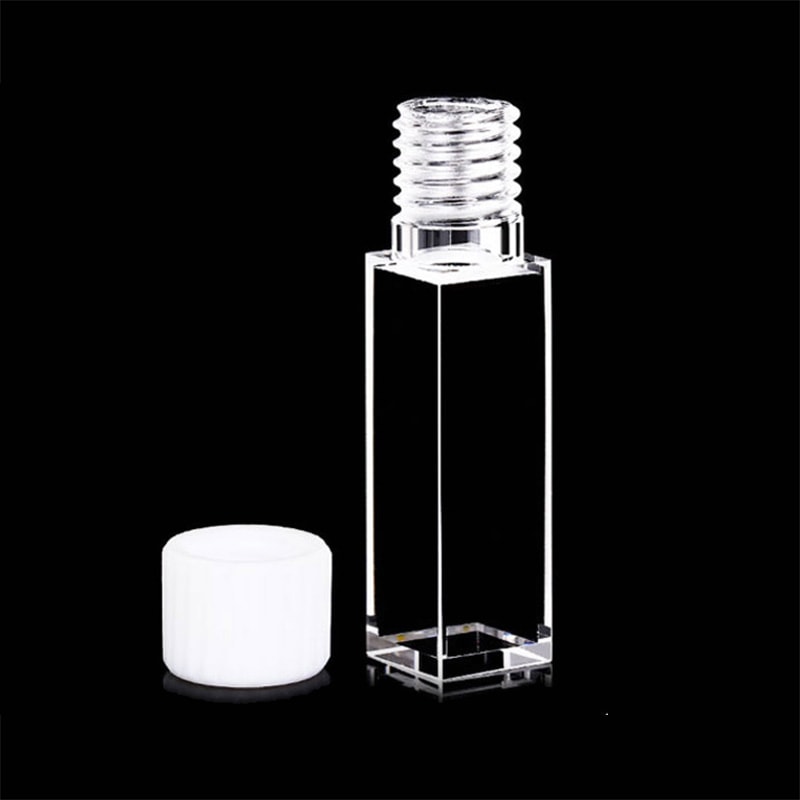Spectrophotometry is an essential element of scientific discovery, a method that unveils the mysteries of light absorbance and transmittance in certain wavelengths. Its heart is the cuvette a humble yet critical vessel that holds the samples for analysis. Cuvettes are small container, which may appear to be insignificant, but its structure and dimensions, such as the length of the route and the choice of materials, is crucial for obtaining precise data on purity and concentration. This fascinating field will be explored, where cuvette dimensions and dimensions influence the results of every study.
The Power of Cuvette Path Length
Imagine that a beam passes through a specimen. The outcome is determined by how long the path of the cuvette. This is the length light travels in the liquid. For many laboratories, a cuvette that is 1 cm in length is the best because it is able to strike the right balance between sensitivity as practicality. Why is this important? The longer the light path is, the higher the amount of light that is taken in. Thus, the signal will be amplified for sample that is diluted. For concentrated solutions such as protein or nucleic acids, a shorter pathway length can alter the course of play. This reduces dilution and preserves precious samples, as well as cutting down on the time needed to prepare. What’s the lesson to be learned? Making sure that the path length is in line with samples’ requirements is a fine technique that increases reliability.

Image credit: cuvet.co
Cuvette Dimensions: A look at more than what meets the eye
It’s not only about the amount of liquid you can fit within the vessel, but it’s important to consider how the vessel works with the spectrophotometer. Each cuvette is made for a specific task and comes in a range of shapes and sizes. Semi-micro cuvettes have smaller sizes and thicker walls. They are great for samples with small volumes. The thicker walls limit the space inside that allows light to travel through without any loss of droplets. This is a huge advancement over a traditional cuvette. It requires fewer steps to pipette, is less susceptible to errors and results that are reliable. It’s a clever modification which shows that size isn’t just a numerical value, it’s also a strategic factor.
The 1cm Path Length Cube: A Lab Favorite
Why does the 1 cm path length cuvette reign supreme in so many experiments? It’s the sweet spot for biological measurement, since samples are often scarce and every milliliter is important. This classic design gives the same absorbance measurement without overloading the detector. This isn’t the model that fits all. There’s no one size fits all hero. The choice of the correct instrument is vital, don’t just use the one you are comfortable with. An instrument that’s not matched to a cuvette which isn’t right for the job.
Material Matters Beyond Path and Size
Cuvette dimensions only tell a portion of the story material choice makes a difference. Glass and quartz cuvettes are notable due to their excellent transmission rate and allow light to flow through with little interference. They’re strong, durable and ideal for challenging spectroscopy tasks. Plastic cuvettes are also affordable and practical. They can be used and thrown away. You don’t have to clean the cuvettes, and there’s no chance of cross-contamination. They’re great for speedy DNA or test for RNA as well as aqueous solution. The price? The trade-off? Purists will choose quartz while pragmatics might prefer plastic.
Precision in Practice
The variety of cuvettes is the reason they are attractive. Spacers with short pathways can be used to handle concentration samples. The larger vessels are better to handle larger volumes. Each choice of path length, size, and material ripples through the experiment making clear the results. Consider a lab that is looking at the amount of protein. A semimicro cuvette is a shorter path, which eliminates the need for dilution and delivers reliable data faster. Compare that with a careless change of cuvettes in middle of an experiment and you’ll see numbers fall. This is a reminder that the smallest details can have a big impact on spectrophotometry.
Cuvettes might be small yet their importance is immense. They are available in a variety of sizes starting from the cuvette with a length of 1 cm to ones that are custom made. They bridge the gap that exists between sample and insight. If you’re looking for quality or concentration, the right cuvette turns the best measurement into a superior one-of-a-kind proof of the fact that in science, precision starts with the tools at hand.